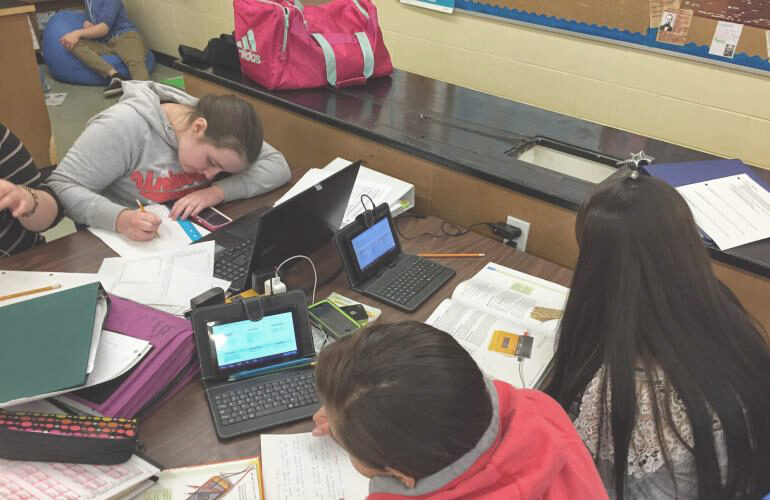How do we bridge the digital divide, support the education of the next generation and help shape the innovators of tomorrow? By making sure that every student in Ontario has equal access to technology and connectivity. ORION’s Nexus K-12 Teacher Survey, part of our ongoing community consultations, is helping us discover how to support teachers with e-learning and technology.
Empowering Ontario’s Teachers
Manitoulin Secondary School (MSS) sits on the picturesque shores of Manitoulin Island, nestled in the curve of Lake Huron’s northern channel. The location is beautiful and serene, but paradise comes with some very real challenges, including access to digital resources. MSS mathematics and science teacher Heather Theijsmeijer, frustrated that the digital divide was adversely affecting her students, decided to do something about it.
Heather Theijsmeijer responded to ORION’s Nexus K-12 Teacher Survey, which was designed to discover how to support educators across the province with technology. “I saw a survey on Twitter wanting to know more about how teachers in Ontario were looking to use technology in their classrooms,” Theijsmeijer explained. “I thought, ‘What the heck, this is something I’m passionate about.’ ”
Theijsmeijer, like many Ontario teachers, knows that educational technology is a powerful student motivator. In fact, according to the Ontario Ministry of Education, the use of tablets as a learning resource in schools increased in this province by 20% in 2014. Why? Teachers point to two key benefits that come with being part of a connected school community: expanded content and the ability to respond to a range of learning abilities.
Hundreds of teachers across the province responded to ORION’s Nexus K-12 Teacher Survey, detailing just how crucial connectivity and reliable digital infrastructures are to the classroom. Theijsmeijer’s entry won the day and she was awarded enough UbiSlate tablets for her entire class. “Before ORION got involved the only computers available to our students were old desktops,” Theijsmeijer said. “I was honest about our situation, writing that we don’t need big things, we just want to get our kids online.” Theijsmeijer reports that the tablets were a huge and welcome surprise: “They put us on the pathway to connectivity.”
Connecting the Classroom
How did Theijsmeijer’s grade nine science class put these new tablets to use? Together, they came up with a special project: finding comparisons between electricity usage in Canada and other countries. The students created a survey, shared it via social media, and were astonished to receive more than 600 responses from 40 countries.
Their teacher says that becoming a connected classroom was helpful in ways she hadn’t anticipated. “We used the devices to track the data as it was coming in, but also to do research,” Theijsmeijer said. “The students would choose a country, gather the data on a Google Sheet and compare their findings. And then if they didn’t know much about a country from which we got responses – Romania, for instance – they’d look it up and learn even more.”
With access to knowledge and digital literacy now only a click away, students like these – located in rural and non-centralized schools – are as empowered as their urban counterparts when it comes to creating, sharing and consuming meaningful content. “We’re grateful for this opportunity, as it definitely changed the class and my students’ attitude toward learning,” said Theijsmeijer. “Thanks to these devices, they discovered there’s a whole world out there looking to engage with them.”


